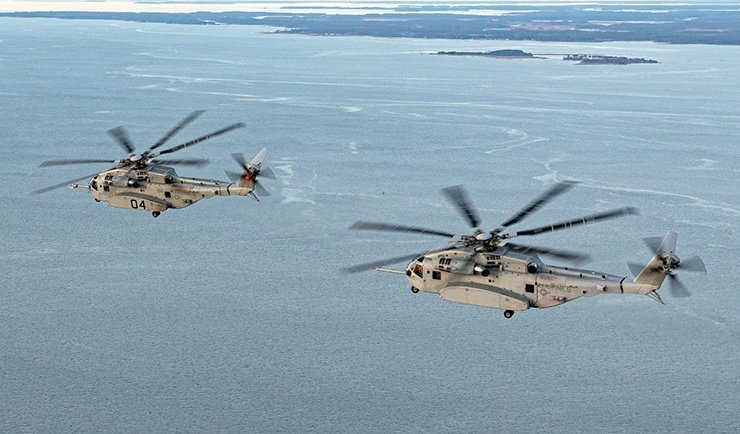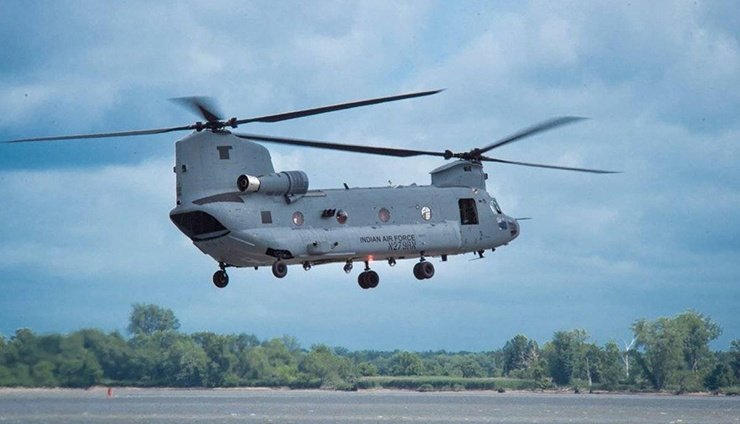
Tel Aviv. The maintenance of the Israeli Air Force (IAF) CH-53 heavy helicopters has become a very complicated task, and this adds to urgency for the selection of a replacement.
To explain the urgency, the Israel Defense Forces (IDF) Chief of Staff Lt General Aviv Kochavi recently flew in an old IAF’s CH-53 (Yasu) in a scenario of a long range flight that landed at the depth of ‘Enemy zone” where the crew with a team of special commando unit, demonstrated the rescue of a downed pilot.
During the flight, commander of the IAF Maj. General Amikam Norkin detailed the urgent need for the selection of a replacement in face of the threats that the IDF faces across the Israeli borders and far beyond.
The IAF has evaluated the two contenders – the Lockheed Martin CH-53 K and the Boeing CH-47.
The IAF pilots and technician teams, that have flown the two heavy helicopters in the US, have prepared comprehensive reports that include all the aspects like capabilities, availability and life cycle cost.
The ground forces command of the IDF has made it clear that the need of a new heavy helicopter is “very urgent”.
The urgency became clear in November 2019, after one of the old CH-53s caught fire and performed an emergency crash landing in a field in southern Israel.
While the CH-53 helicopter was completely destroyed in the blaze after its engine caught fire following the emergency landing, all 11 soldiers from the elite Shaldag commando unit and two pilots onboard the aircraft made it out unhurt.

The helicopter was one of three en route to a base in southern Israel for a training exercise, and was flying at a height of 170 meters when the third aircraft notified the pilots of the fire in the engine. The pilots carried out the emergency landing within a minute of the fire breaking out.
Following the accident, the IAF has grounded all its CH-53s for three weeks and launched an investigation.
The investigation team found that the initial fire was caused by a disintegration of a power relay in the left engine, which led to the fire of the engine.
“Despite the fact that this malfunction had been identified by the manufacturer, the information was never passed along to the air force. The investigation team also found that the air force’s maintenance procedures did not find the malfunction in the relay,” the IAF said.
Lockheed Martin, which owns Sikorsky, said it was looking into the matter. “Sikorsky continues to work with the Israeli Air Force investigation authorities in respect to this incident. We will share any verified actionable information with the operating fleet. At this time we have no further comment,” the company said.
The accident emphasises, according to sources, the need to make a fast selection of the replacement of the CH-53Ds that have been upgraded again and again.
The process of selecting a new helicopter has been slow in spite of the fact that the shortage of spares for the CH-53Ds. This shortage forced the IAF to ask for a shipment of grounded helicopters kept in the US Marines junk yard, for cannibalisation.
Boeing is offering the Chinook F Block 2 which is in some ways similar to the G operated by the US Special Forces.
This version will have an aerial refueling probe and larger fuel tanks.

According to Israeli military sources, the version offered to the IAF will be a hybrid between Chinook F and Chinook G but with larger fuel tanks, similar to the model currently flying in Canada.
The Chinook cockpit is expected to be fully computerised and will feature unique systems of the G-type.
The Chinook F Block 2 is in the process of receiving a number of enhancements to its digital cockpit called the Common Avionics Architecture System or CAAS.
The Chinook F Block 2 will also get new rotor blades engineered with composites and other materials designed to give the helicopter an additional 1,500 pounds of lift capability.
The current fleet of CH-53 (Yasur) is planned to remain in service until 2028.
-The writer is an Israel-based freelance journalist. Views expressed are personal and do not necessarily reflect the views of Raksha Anirveda








